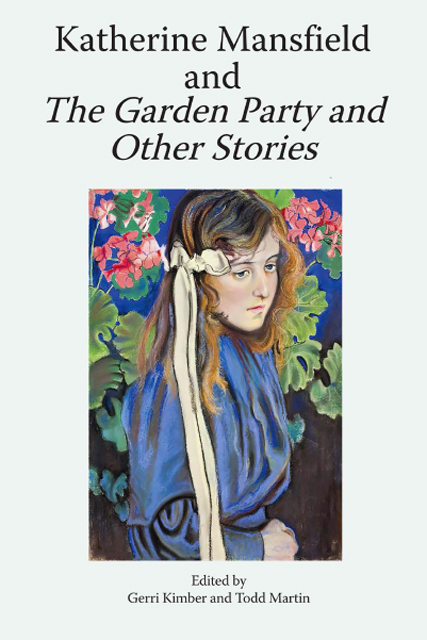Returning to ‘Kathy’: Christopher Isherwood’s Katherine Mansfield Fascination
Published online by Cambridge University Press: 03 June 2023
Summary
There has been considerable discussion about the use of the nickname ‘Kathy’ by Christopher Isherwood’s long-time close friend, W. H. Auden. In Auden’s poem ‘Here on the cropped grass of the narrow ridge I stand’, he includes the lines: ‘And Kathy in her journal, “To be rooted in life / That’s what I want.”’ Gerri Kimber brought the poem to our attention when she arranged to have it reprinted in 2012 in the fourth volume of Katherine Mansfield Studies. Susan Reid’s ‘A Note on Auden’s “Kathy”’ appears in the same volume and beautifully draws out interesting parallels between Mansfield and Auden in both their writing and their lives.
Yet it was actually Isherwood who introduced Auden to that nickname, many years before Auden’s poem appeared in 1936. Auden had been collaborating with Isherwood in writing and producing several verse plays, most recently The Dog Beneath the Skin, which was first performed on 30 January 1936 at the Westminster Theatre. It is conceivable that their current close association might have reawakened Auden’s memory of Isherwood’s adolescent literary game-playing: Brian Finney, Isherwood’s biographer, mentions that Isherwood and Edward Upward, his closest friend at Repton Public School, enjoyed dividing literary figures into enemies and allies and referring to them with nicknames. They had been influenced by Robert Nichols, a well-known poet of the Great War, who liked to refer to writers that way, such as using ‘Wordy’ for Wordsworth.
Later, when Isherwood and Upward were students at Cambridge in 1923, they added to their ‘allies’ (which had included Wilfred Owen and Baudelaire) both Katherine Mansfield and Emily Brontë, whom they now called ‘Kathy’ and ‘Emmy’. Finney calls it ‘a strange amalgam, united possibly by their cult of strangeness and their early deaths’. Without delving too deeply into Freudian territory, I might mention that there could also be an oedipal element in Isherwood’s attraction to the name ‘Kathy’. His mother’s name was Kathleen and he had a very complicated relationship with her, especially after his father died in battle in 1915 (the same year that Mansfield lost her brother).
* * *
Ironically, in writing about Isherwood’s responses to Mansfield, I am also making a personal return. I find myself reminiscing about the very beginning of my academic career and how I once spent a day with Christopher Isherwood.
- Type
- Chapter
- Information
- Katherine Mansfield and The Garden Party and Other Stories , pp. 173 - 185Publisher: Edinburgh University PressPrint publication year: 2022



